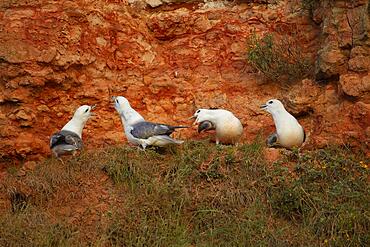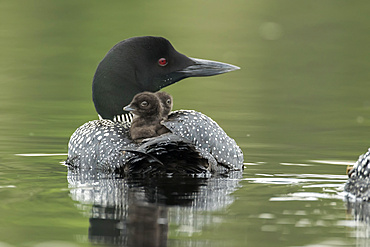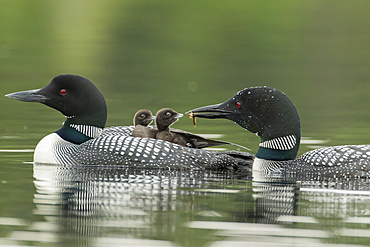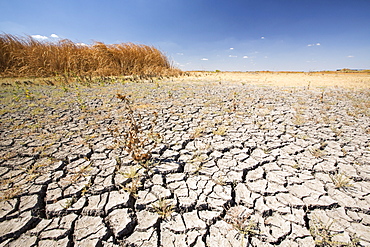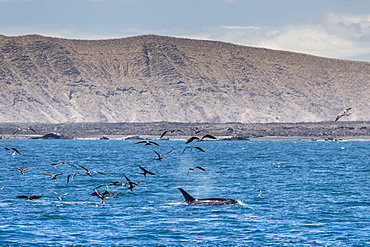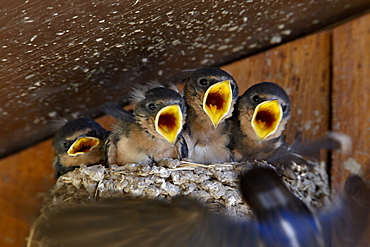Recent searches
Loading...
832-400647 - Aerial view, Asia, Maldives, North Male Atoll, Kuda Huraa, Four Season Maldives, with beaches and water bungalows, Asia
832-400646 - Aerial view, Asia, Maldives, North Male Atoll, Kuda Huraa, Four Season Maldives, with beaches and water bungalows, Asia
832-400645 - Aerial view, Asia, Maldives, North Male Atoll, Kuda Huraa, Four Season Maldives, with beaches and water bungalows, Asia
832-400487 - Northern Fulmar (Fulmarus glacialis) four adult birds on a cliff, Norfolk, England, United Kingdom, Europe
1116-52047 - Common loon (Gavia immer), an adult loon carries two babies on his back, La Mauricie National Park; Quebec, Canada
1116-52048 - Common loon (Gavia immer), an adult loon carries two babies on his back when the other adult feeds on of them with a damselfly larva, La Mauricie National Park; Quebec, Canada
1335-148 - Four trumpeter swans (Cygnus buccinator), on the river with reflection, Yellowstone National Park, UNESCO World Heritage Site, Wyoming, United States of America, North America
1116-47609 - Willow Ptarmigans (Lagopus lagopus) standing in snow with white winter plumage in Arctic Valley, South-central Alaska, Alaska, United States of America
1116-46531 - Four King Penguins (Aptenodytes Patagonicus) On A Beach Walking In A Row, South Georgia, South Georgia, South Georgia And The South Sandwich Islands, United Kingdom
860-287780 - Common Redpoll (Acanthis flammea) on rock, GreenlandIt is one of the four sparrows that makes the great migration and thus crosses the Greenland Sea to nest in the recessed places of Greenland.
1116-44893 - Four King Penguins (Aptenodytes Patagonicus) Walking Together On Beach, Antarctica
860-287183 - Four Swans are accompanied by four Canada Geese in the early morning sun.
832-382166 - African Penguins (Spheniscus demersus), couple with molting chick, Boulders Beach, Simon's Town, Western Cape, South Africa, Africa
764-5460 - Common goldeneye (Bucephala clangula) female swimming with four chicks, Lac Le Jeune Provincial Park, British Columbia, Canada, North America
764-5430 - Common Goldeneye (Bucephala clangula) female swimming with four chicks, Lac Le Jeune Provincial Park, British Columbia, Canada, North America
911-10344 - The Kern Valley Wildlife Refuge in California's Central Valley was created as important resting and feeding grounds for wildfowl migrating along the pacific flyway. After four years of unprecedented drought, the water shortages in California are critical. The reserve has received only 40% of its usual warer, with the result that most of the lake beds are dried up and dessicated, leaving the birds nowhere to go.
911-10345 - The Kern Valley Wildlife Refuge in California's Central Valley was created as important resting and feeding grounds for wildfowl migrating along the pacific flyway. After four years of unprecedented drought, the water shortages in California are critical. The reserve has received only 40% of its usual warer, with the result that most of the lake beds are dried up and dessicated, leaving the birds nowhere to go.
911-10343 - The Kern Valley Wildlife Refuge in California's Central Valley was created as important resting and feeding grounds for wildfowl migrating along the pacific flyway. After four years of unprecedented drought, the water shortages in California are critical. The reserve has received only 40% of its usual warer, with the result that most of the lake beds are dried up and dessicated, leaving the birds nowhere to go.
911-10338 - The Kern Valley Wildlife Refuge in California's Central Valley was created as important resting and feeding grounds for wildfowl migrating along the pacific flyway. After four years of unprecedented drought, the water shortages in California are critical. The reserve has received only 40% of its usual warer, with the result that most of the lake beds are dried up and dessicated, leaving the birds nowhere to go.
911-10339 - The Kern Valley Wildlife Refuge in California's Central Valley was created as important resting and feeding grounds for wildfowl migrating along the pacific flyway. After four years of unprecedented drought, the water shortages in California are critical. The reserve has received only 40% of its usual warer, with the result that most of the lake beds are dried up and dessicated, leaving the birds few places to go. This is the only area of lake with any water left.
1174-2058 - A group of four adult King penguins at the water's edge walking into the water, at sunrise. Reflected light, Fortuna Bay, South Georgia Island
764-4533 - Whooper Swan (Cygnus cygnus) and four cygnets swimming, Iceland, Polar Regions
1112-1571 - A small pod of four or five killer whales (Orcinus orca) feeding amongst frigatebirds between Fernandina and Isabela Islands, Galapagos Islands, UNESCO World Heritage Site, Ecuador, South America
1112-1572 - A small pod of four or five killer whales (Orcinus orca) feeding amongst frigatebirds between Fernandina and Isabela Islands, Galapagos Islands, UNESCO World Heritage Site, Ecuador, South America
1161-1471 - Rainbow Lorikeets perched on a branch above Thala Beach, Port Douglas, Queensland, Australia
832-223860 - International German Gymnastics Festival 2009 procession, mounted Police, Frankfurt am Main, Hesse, Germany, Europe
832-205730 - Water sports, double-coxed fours, young rowers in action
832-199424 - Three jeeps with tourists lost on a trip in the depths of the Sahara, Libya, Africa
832-156573 - Aerial photo, Bruchhauser Steine, four large porphyry rocks located on a mountain, snow, winter, Olsberg, Sauerland, North Rhine-Westphalia, Germany, Europe
832-149501 - Goose Girl, girl with four geese as decoration on a building wall, 33 Grand'Rue, Ammerschwihr, Alsace, France, Europe
832-126901 - Boats at the Ponta da Piedade in Lagos, Algarve, Portugal, Europe
832-118800 - Aerial view, Seseke, tributary of the lip, SesekeKunst, Line of Beauty - the fifth treatment plant, Susanne Lorenz, cycle lane, Klaerwerk 4 four sewage treatment plant Kamen, Luenen, Ruhrgebiet region, North Rhine-Westphalia, Germany, Europe
832-118799 - Aerial view, Seseke, tributary of the lip, SesekeKunst, Line of Beauty - the fifth treatment plant, Susanne Lorenz, cycle lane, Klaerwerk 4 four sewage treatment plant Kamen, Luenen, Ruhrgebiet region, North Rhine-Westphalia, Germany, Europe
989-216 - Four Mallard drakes (Anas platyrhynchos) and a duck flying over frozen lake in snowstorm, Wiltshire, England, United Kingdom, Europe
817-410339 - Olive baboon, Papio Anubis, Olive baboons are widespread throughout equatorial Africa and are found in 25 countries. From the west coast of Africa moving eastward. In the picture there is a mother with a juvenile, the mother is eating some grass and the s. Olive baboon, Papio Anubis, Olive baboons are widespread throughout equatorial Africa and are found in 25 countries. From the west coast of Africa moving eastward. In the picture there is a mother with a juvenile, the mother is eating some grass and the small one is in its back. In Uganda, olive baboons live in open woodland bordered by savannah and in evergreen tropical forests At Queen Elizabeth National Park, situated in Uganda, near the border of Democratic Republic of Congo, the habitat is characterized by dense forest, coarse wet grass, short grass and open grassland. Olive baboons consume a wide variety of foods and they can adapt to very different kind of habitats, from desert to mountain forest because they have many different strategies and habilities to extract food and nutrients. Baboons are omnivores and consume a huge variety of vegetables, insects, birds, eggs, and vertebrates including other primates. The Olive Baboon is one of the largest baboons, with the males being larger than the females. Their body length is 60, 86 cm, their tail length is 41, 58 cm and they weigh between 22 and 37 Kg. There is some geographical variation in average size. They have an olive green/grey coat that covers their bodies and a black face. The males have large canine teeth where as the teeth of females are much smaller. They move around on all four limbs. They live in troops of males and females that consist of between 20 and 50 members. The picture was taken in Ugande, in the Queen Elizabeth National Park, near the Kazinga channel., Uganda, Africa, East-africa
995-69 - Whooper Swan (Cygnus cygnus) on an early morning flight, slow shutter speed capturing a circular flight around the valley floor. Shot shows valley walls in the background , Scotland
995-82 - Canadian Goose (Branta canadensis), lined up together with one bird in focus. These Geese were swimming on Loch Awe on a still and frosty morning, when they came to a halt in a line looking very proud.. Argyll, Scotland
995-204 - Bar-Tailed Godwit (Limosa lapponica) group of four walking together along beach searching for food. Gott Bay, Argyll, Scotland, UK
979-1430 - King Penguins (Aptenodytes patagonicus) swimming at surface on South Georgia Island, southern Atlantic Ocean.
979-1579 - Four adult Adelie penguins (Pygoscelis adeliae) preparing to return to the sea to feed on Paulet Island on the Northeast side of the Antarctic Peninsula.
979-1482 - Four adult Gentoo Penguins (Pygoscelis papua) walking in formation to the sea on the Antarctic Peninsula.
738-68 - Tourist and Magellanic penguins on beach, Carcass Island, Falklands, South America
764-2805 - Line of four Sandhill crane (Grus canadensis) in a pond silhouetted at sunset, Bosque Del Apache National Wildlife Refuge, New Mexico, United States of America, North America
764-2182 - Four barn swallow (Hirundo rustica) chicks chirping, Custer State Park, South Dakota, United States of America, North America
817-217864 - Atlantic Puffin Fratercula arctica on rock, four birds standing in a row, Foula Europe, Great Britain, Scotland, Shetland Islands, Foula, May 1999
817-176353 - Greater Rhea (Rhea americana), The birds live naturally in South America, especially South Brasil, Argentina, Chile
817-175459 - Hyacinth macaw (Anodorhynchus hyacinthinus) group perching on a branch, Pantanal near Porto Joffre, Mato Grosso, Brazil.
817-128275 - Lesser Flamingos (Phoenicopterus minor) at sunrise on a foggy morning, Lake Nakuru, Kenya
817-106233 - Swallow (Hirundo rustica) adult (in flight) feeding chick perched, Scotland, UK.
817-49887 - Emperor Penguins (Aptenodytes forsteri), Ross Sea, Antarctica
817-48551 - Peach-faced Lovebirds (Agapornis roseicollis)
817-84028 - Burrowing Owl (Speotyto cunicularia), Venezuela
817-13248 - Hoatzins (Opisthocomus hoazin), Manu National Park, Peru
764-1150 - Four barn swallow (Hirundo rustica) chicks chirp as parent approaches nest with food, Custer State Park, South Dakota, United States of America, North America
788-14784 - Four seagulls perching on rock, Ballestas Islands, Paracas National Reserve, Ica Region, Peru
764-462 - Four king penguins (Aptenodytes patagonica) on tussock-grass nests, Salisbury Plain, South Georgia, Polar Regions
748-751 - Emperor penguins (Aptenodytes forsteri), Snow Hill Island, Weddell Sea, Antarctica, Polar Regions
748-828 - Emperor penguins (Aptenodytes forsteri) and chicks, Snow Hill Island, Weddell Sea, Antarctica, Polar Regions
You reached the end of search results



